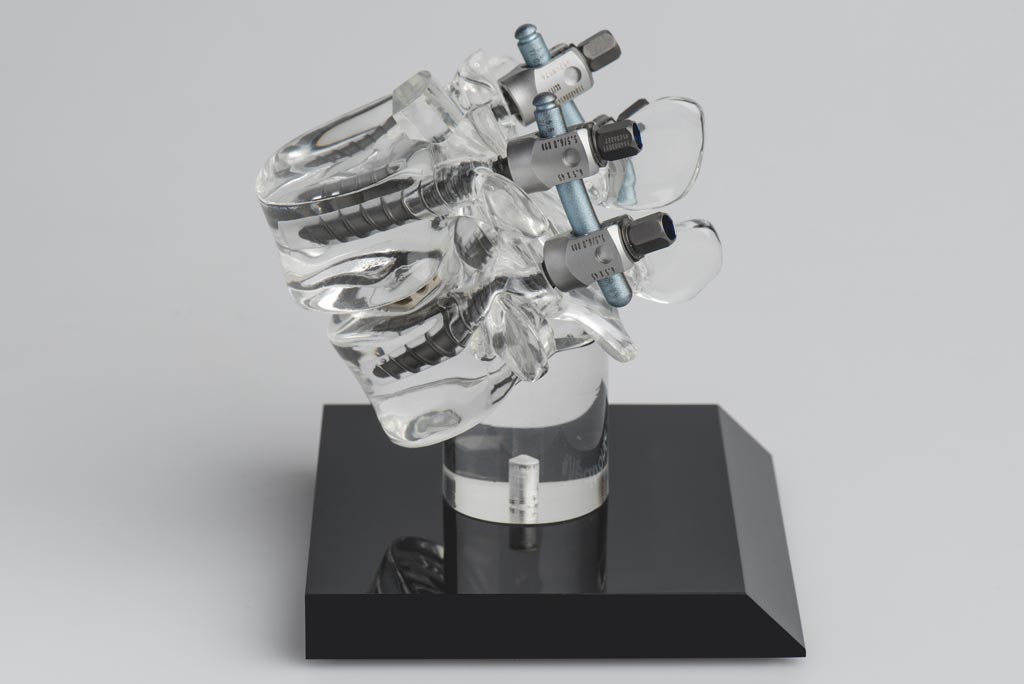Sensor-Enhanced Robot Enables Precision Spinal Surgery
By HospiMedica International staff writers
Posted on 03 Jan 2018
Augmented robotic technology provides a high-precision, sensor-based surgical device for spinal and neurosurgical interventions.Posted on 03 Jan 2018
Under development by researchers at the University of Bern (Switzerland), Bern University Hospital (Inselspital; Switzerland), and the Swiss Center for Electronics and Microtechnology (CSEm; Neuchâtel, Switzerland), The sensor-enabled technology uses the complexity of vertebral anatomy as a map, allowing the robotic drill to sense the bone terrain. When combined with electromyography (EMG) neuro monitoring, the robot can avoid such obstacles as nerves and boundaries of the bone.

Image: Spine model with four pedicle screws for spine stabilization (Photo courtesy of Pascal Gugler).
Thicker bone, thinner bone, and nerves are sensed with a super-human, robotic perception and verified at high speed by matching it to relevant imaging information established prior to the procedure. EMG data is then used as a crosscheck control loop to give early warning on the proximity of nerve tissue and overall integration of surgical robotic system. Once positioning is confirmed, the robotic drill uses force-density pose estimation to allow neurosurgeons to accurately place pedicle screws perfectly and with precision in every patient, every time.
“For the first time the neurosurgeon has real-time data on where the drilling instrument is during the procedure and the surgical robot acts with supreme accuracy, shutting down the drilling far sooner that a human operator could, thereby avoiding breakthrough or injury,” said Andreas Raabe, MD, of the department of neurosurgery at Inselspital. “This means potentially zero morbidity procedures with respect to pedicle screw misplacement. We see this as the future of spine surgery.”
The main challenge of manual spine stabilization using pedicle screws is the uneven terrain of vertebral bone, since functional articulation of the spine is only made possible by the complex shape and bone density composition of the vertebrae. Drilling and positioning a screw into a highly variable part of the spine, whether manually or with image guidance technologies, fails around 15%, with screw missing the central part of the vertebrae and extending out of the bone, in many cases to irritate surrounding tissue or nerves.
Related Links:
University of Bern
Bern University Hospital
Swiss Center for Electronics and Microtechnology














